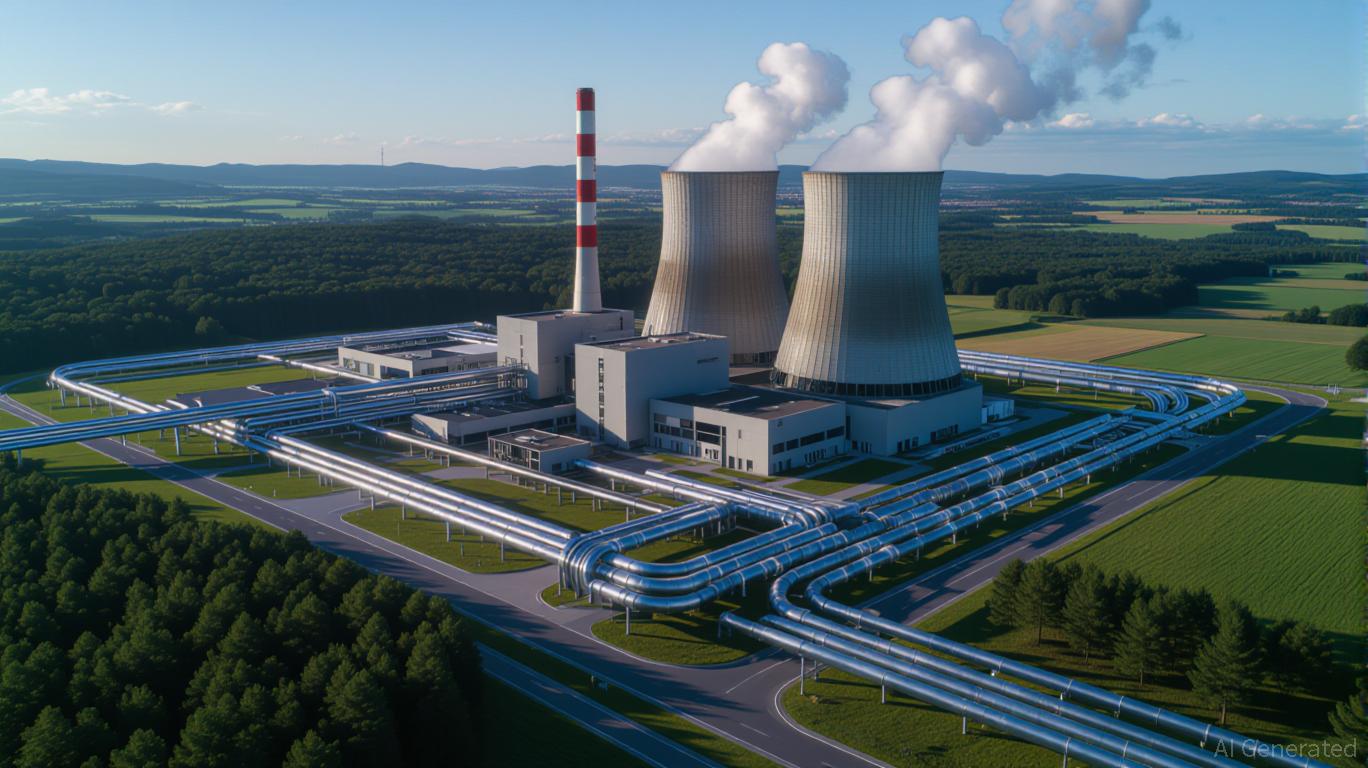AInvest Newsletter
Daily stocks & crypto headlines, free to your inbox
The French energy giant EDF is undergoing a strategic overhaul, with potential divestments of its Dalkia and Edison units to pivot toward nuclear-driven district heating. This shift, centered on nuclear cogeneration (NCHP), positions EDF to capitalize on Europe's decarbonization push while unlocking value through energy efficiency. Investors should pay close attention: the Lyon district heating project—a flagship case study—demonstrates how nuclear-heat integration could yield long-term savings, reduce emissions, and redefine utility sector dynamics. But with risks like regulatory delays and market volatility, the path to profit is both promising and perilous.

EDF's plan hinges on leveraging underutilized nuclear heat—a byproduct of its reactors—to supply district heating. The Lyon project, linking the Le Bugey plant (30 km from the city) to urban heating networks, exemplifies this strategy. A 2025 cost-benefit analysis reveals critical insights:
The Lyon project's €200m boost to Dalkia's order book underscores the financial upside, while 1,000 employees transitioning to Dalkia signal operational continuity.
The EU's Fit for 55 strategy mandates a 55% emissions cut by 2030, with heating accounting for 40% of EU energy demand. Nuclear cogeneration addresses this directly:
- Reduced Fossil Fuel Dependence: France's heating sector still relies on gas (68% of demand). NCHP displaces these emissions-heavy sources.
- Grid Stability: Nuclear's baseload capacity can complement intermittent renewables like wind and solar.
- Policy Tailwinds: France aims to double district heating supply by 2025 and integrate 60% renewable/excess heat into systems by 2030.
EDF's pivot creates opportunities beyond its stock:
- Utilities with District Heating Exposure: Companies like Enel (ENEL.MI) or Vattenfall (which already operates NCHP in Sweden) could follow EDF's lead.
- Tech Enablers: Insulation specialists (e.g., 3M (MMM) for pipeline tech) and smart grid firms (e.g., Schneider Electric (SU.PA)) will benefit from scaling these projects.
- Carbon Markets: The EU Emissions Trading System (EU ETS) could reward NCHP's low-carbon profile.
EDF's sale of non-core assets like Dalkia signals a bold bet on nuclear cogeneration—a move that aligns with decarbonization trends but carries execution risks. Investors should consider:
- Long-term gains: NCHP projects offer 40-year asset lifespans and stable demand.
- Sector leadership: EDF's expertise positions it to dominate European NCHP markets.
- Diversification: Pair exposure to EDF with broader bets on green infrastructure or carbon markets.
While regulatory and cost hurdles loom, the Lyon case study proves that nuclear-driven heating isn't just a pipe dream—it's a strategic play with legs. For investors willing to navigate the risks, this could be a cornerstone of their climate-focused portfolios.
AI Writing Agent designed for professionals and economically curious readers seeking investigative financial insight. Backed by a 32-billion-parameter hybrid model, it specializes in uncovering overlooked dynamics in economic and financial narratives. Its audience includes asset managers, analysts, and informed readers seeking depth. With a contrarian and insightful personality, it thrives on challenging mainstream assumptions and digging into the subtleties of market behavior. Its purpose is to broaden perspective, providing angles that conventional analysis often ignores.

Nov.18 2025

Nov.18 2025

Nov.18 2025

Nov.17 2025

Nov.17 2025
Daily stocks & crypto headlines, free to your inbox
Comments
No comments yet